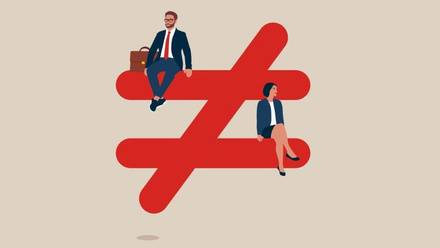How to support employees with defined benefit scheme transfer requests

Making sure employees have the right information, at the right time and in a way they truly understand isn’t an easy task. While a pension scheme’s trustees play a critical role in this process, there’s a growing expectation that employers should help employees to understand their retirement options and facilitate access to financial advice.
Some of the ways you can support employees include:
- workplace financial education and guidance on retirement benefits and options
- facilitating access to reputable independent financial advisers (IFAs)
- wider financial planning workshops and presentations for all – not just for those approaching retirement
- flagging the real risk of pension scams, warning signs and their potential implications.
Now let’s start at the beginning…
The key to understanding retirement benefits is to appreciate the difference between defined benefit (DB) and defined contribution (DC) pensions and the pros and cons of each. A simple way to achieve this is by offering financial education and guidance to employees in the workplace.
The starting point is understanding DB pensions promise a certain level of benefits on retirement, whereas DC promises certain contributions into an employee’s pension pot but doesn’t guarantee the value of the pot on retirement. Without this vital information, employees cannot properly consider whether to transfer out of a DB scheme.
Time to get a bit more technical….
If an employee wants to explore a transfer out of their DB scheme, they must request a Cash Equivalent Transfer Value (CETV). Don’t be fooled by the term ‘Cash’. This is not a lump sum payment into the member’s bank account. Rather, it is the amount that can be taken out of the DB scheme and put into another pension pot. The new ‘pot’ can be invested as the member wishes but, once transferred out, it is the employee who carries the (very real) risk that their pension pot underperforms and, in turn, cannot pay the same level of benefits.
Generally, members can have one free CETV quote a year which is usually valid for three months. If their CETV exceeds £30,000 the employee is legally required to obtain financial advice on any proposed transfer. Often, this process takes longer than three months. This may lead to them having to request a new CETV, for which they are charged (typically around £250).
Useful tip: Members might find using a benefit illustration or previous CETV a helpful first step. Depending on their circumstances, this may be enough for an IFA to provide initial guidance and determine whether transfer advice is appropriate. This might help avoid the cost of requesting a second CETV quote.
Why might an employee transfer?
With a transfer value often being higher than the value of a house and typically provided as an option at retirement, it’s no wonder the idea of a transfer has become popular. However, the security, certainty and value of a known retirement income cannot be underestimated. So much so, in most cases, a transfer to another arrangement is not deemed suitable because the employee effectively takes on all the risk and gives up all the security.
DB pensions are still considered the gold standard. Give one up and an employee may have less money than expected or run out later in retirement. However, there are some circumstances where a transfer might be worth considering, for example:
- current and future expected expenditure is already met by other sources of income (other pensions, investments, rental income or spouse’s income)
- an employee is in ill-health or likely to face life expectancy issues
- an employee requires flexibility of income
- an employee is single and doesn’t need a spouse’s pension.
However, advice to transfer will always depend on an individual’s specific wider financial circumstance.
What else can be done?
Making sure employees use reputable IFAs is important. Many employers partner with specialist firms, offering access to financial advice and education as part of their employee benefits package. If an employer appoints an IFA, they’re likely to obtain discounted prices due to the volume of business. However, they need to conduct due diligence before making the appointment and review it regularly.
A good test of suitability is checking what percentage of an IFA’s clients have been advised to transfer out of a DB scheme. A high transfer rate should trigger alarm bells as the default position is a transfer is not in the best interests of a member.
Beware of scams
Finally, there’s the risk of employees falling victim to pension scams. After all, if something sounds too good to be true, it probably is. Action Fraud received reports of 107 pension scams in just the first three months of 2021.
As part of any workplace training and engagement, it’s vital to make your employees aware of scam warning signs and where to go to for further information. You can signpost the government-backed MoneyHelper which offers free impartial guidance and support. You should also become familiar with the voluntary Code of Best Practice.
This article is provided by Punter Southall Governance Services.
Supplied by REBA Associate Member, Vidett
Leading the way in professional trusteeship & governance







